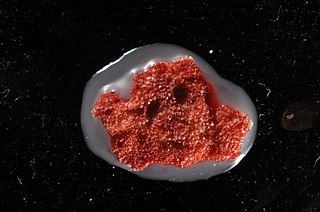October 16 is the 289th day of the year in the Gregorian calendar; 76 days remain until the end of the year.

The California League is a Minor League Baseball league that operates in California. Having been classified at various levels throughout its existence, it operated at Class A-Advanced from 1990 until its demotion to Single-A following Major League Baseball's 2021 reorganization of the minor leagues. The league temporarily operated for the 2021 season as the Low-A West before reassuming its original moniker in 2022.

Bonnie Lynn Bassler is an American molecular biologist; the Squibb Professor in Molecular Biology and chair of the Department of Molecular Biology at Princeton University; and a Howard Hughes Medical Institute Investigator. She has researched cell-to-cell chemical communication in bacteria and discovered key insights into the mechanism by which bacteria communicate, known as quorum sensing. She has contributed to the idea that disruption of chemical signaling can be used as an antimicrobial therapy.

A Generaloberst was the second-highest general officer rank in the German Reichswehr and Wehrmacht, the Austro-Hungarian Common Army, the East German National People's Army and in their respective police services. The rank was equal to a four-star full general but below a general field marshal. The rank was equivalent to a Generaladmiral in the Kriegsmarine until 1945 or to a Flottenadmiral in the Volksmarine until 1990. It was the highest ordinary military rank and the highest military rank awarded in peacetime; the higher rank of general field marshal was awarded only in wartime by the head of state. In general, a Generaloberst had the same privileges as a general field marshal.

The Podocopa are a subclass of ostracods. Members of the subclass Podocopa can be differentiated from the other subclass of ostracods (Myodocopa) by the morphology of the second antenna: the Podocopa have a relatively long endopod, whereas the Myodocopa have a relatively long exopod. The seventh limb of the Podocopa has a variety of forms or is absent, but is never an annulated worm-like limb.
Franz-Ulrich Hartl is a German biochemist and the current Executive Director of the Max Planck Institute of Biochemistry. He is known for his pioneering work in chaperone-mediated protein folding.
The Maryland Open is the Maryland state open golf tournament, open to both amateur and professional golfers. It is organized by the Maryland State Golf Association. It has been played annually since 1921 at a variety of courses around the state. It was considered a PGA Tour event briefly in the 1920s.
Biflustra is a genus of bryozoans belonging to the family Membraniporidae.
Celleporaria is a genus of bryozoans belonging to the family Lepraliellidae.
Idmonea is a genus of bryozoans belonging to the family Idmoneidae.

Microporella is a genus of bryozoans belonging to the family Microporellidae.

Rhynchozoon is a genus of bryozoans belonging to the family Phidoloporidae.
Smittina is a genus of bryozoans belonging to the family Smittinidae.
Septopora is an extinct genus of bryozoan belonging to the order Fenestrida. It has been found in Pennsylvanian to Permian beds in North America, South America, Australia, and southwest and east Asia.
Homotrypa is an extinct genus of bryozoans from the Ordovician and Silurian periods, known from fossils found in the United States. Its colonies are branch-like and have small monticules made of groups of three or four larger zooecia slightly protruding out from the main surface of the colony. In cross section, the zooecia are erect in axis and gently curve toward the surface of the colony.
Eridotrypa is an extinct genus of bryozoans of the family Aisenvergiidae, consistently forming colonies made of thin branches. Diaphragms are very common in colonies. Distinctively, in the exozone there are serrated dark borders separating the autozooecia.
Nicholsonella is an extinct genus of bryozoans of uncertain taxonomic placement. Its colonies can take the forms of thick branching masses or branches.
Moyerella is an extinct genus of bryozoan of the family Arthrostylidae, known from the Upper Ordovician and Lower Silurian periods. Its colonies are branching or segmented, generally articulated (jointed). Its autozooecia are short tubes that appear triangular in cross section within the endozone, bending abruptly when reaching the exozone. The autozooecial apertures are round and aligned into diagonal rows, and paired heterozooecia occur between the autozooecial apertures.
Lichenalia is an extinct genus of cystoporate bryozoan belonging to the family Rhinoporidae. It is known from the Upper Ordovician to the Middle Silurian periods, which spanned from approximately 460 to 430 million years ago. The genus had a cosmopolitan distribution, with fossil specimens found in various regions of the world, including North America, Europe, and Asia.

Fistuliporidae is an extinct family of bryozoans within the order Cystoporida. Members of this family have lived from the early Ordovician to the late Triassic period.






